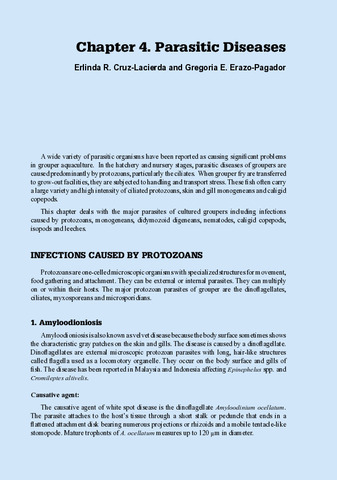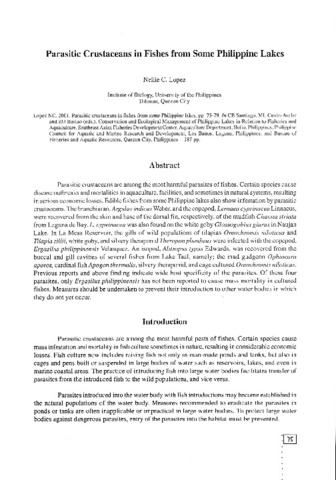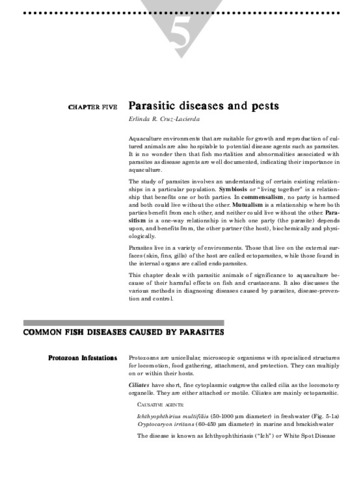Establishment and application of prevention and control methods against parasites of fish cultured in the Philippines
- Global styles
- MLA
- Vancouver
- Elsevier - Harvard
- APA
- Help

Date
2005-03Page views
3,242ASFA keyword
AGROVOC keyword
Taxonomic term
Metadata
Show full item record
Share
Abstract
The efficacy of bath treatment methods against the ectoparasites Amyloodinium ocellatum, Pseudorhabdosynochus lantauensis and Zeylanicobdella arugamensis on marine fish was determined under laboratory conditions. The toxicity of formalin and hydrogen peroxide (H2O2) to orange-spotted grouper (Epinephelus coioides) were also investigated. Freshwater or 200 ppm H2O2 bath treatments for 1 hr were effective against the dinoflagellate A. ocellatum on hatchery-reared mangrove red snapper (Lutjanus argentimaculatus). Hydrogen peroxide at 200 ppm for 1 hr was effective in eliminating the gill monogenan P. lantauensis on E. coioides fingerlings. In vitro treatments of the marine leech Z. arugamensis using 250 ppm formalin for 3 hr significantly killed the parasite. Chlorine at 50 ppm for 1 hr can be used to disinfect leech-contaminated facilities. The computed 3 hr and 6 hr LC10 (10% lethal concentration) of formalin to E. coioides fingerlings is 322 ppm and 275 ppm, respectively, at 28°C. The 9 hr LC10 and LC50 (median lethal concentration) of H2O2 to grouper are 255 and 298 ppm at 28°C.
Suggested Citation
Cruz-Lacierda, E. R., & Pineda, A. J. T. (2005). Establishment and application of prevention and control methods against parasites of fish cultured in the Philippines. In K. Nagasawa (Ed.), Recent Advances in Diagnosis and Prevention of Fish and Shrimp Diseases in Southeast Asia (pp. 315–325). Tigbauan, Iloilo, Philippines: Aquaculture Department, Southeast Asian Fisheries Development Center.
Type
Book chapterISBN
9718511732
Related items
Showing items related by title, author, creator and subject.
-
Parasitic diseases
Cruz-Lacierda, Erlinda R.; Erazo-Pagador, Gregoria E. (Aquaculture Department, Southeast Asian Fisheries Development Center, 2004)A wide variety of parasitic organisms have been reported as causing significant problems in grouper aquaculture. In the hatchery and nursery stages, parasitic diseases of groupers are caused predominantly by protozoans, ... -
Parasitic crustaceans in fishes from some Philippine Lakes
Lopez, Nellie C. (Aquaculture Department, Southeast Asian Fisheries Development Center; Philippine Council for Aquatic and Marine Research and Development (PCAMRD), Department of Science and Technology; Bureau of Fisheries and Aquatic Resources, 2001)Parasitic crustaceans are among the most harmful parasites of fishes. Certain species cause disease outbreaks and mortalities in aquaculture, facilities, and sometimes in natural systems, resulting in serious economic ... -
Parasitic diseases and pests
Cruz-Lacierda, Erlinda R. (Aquaculture Department, Southeast Asian Fisheries Development Center, 2001)A wide variety of parasites have been identified as causing significant economic losses in fish and shrimp culture. Most of these parasites are difficult to control effectively with a single measure. The control of parasites ...

 AQD Access
AQD Access




